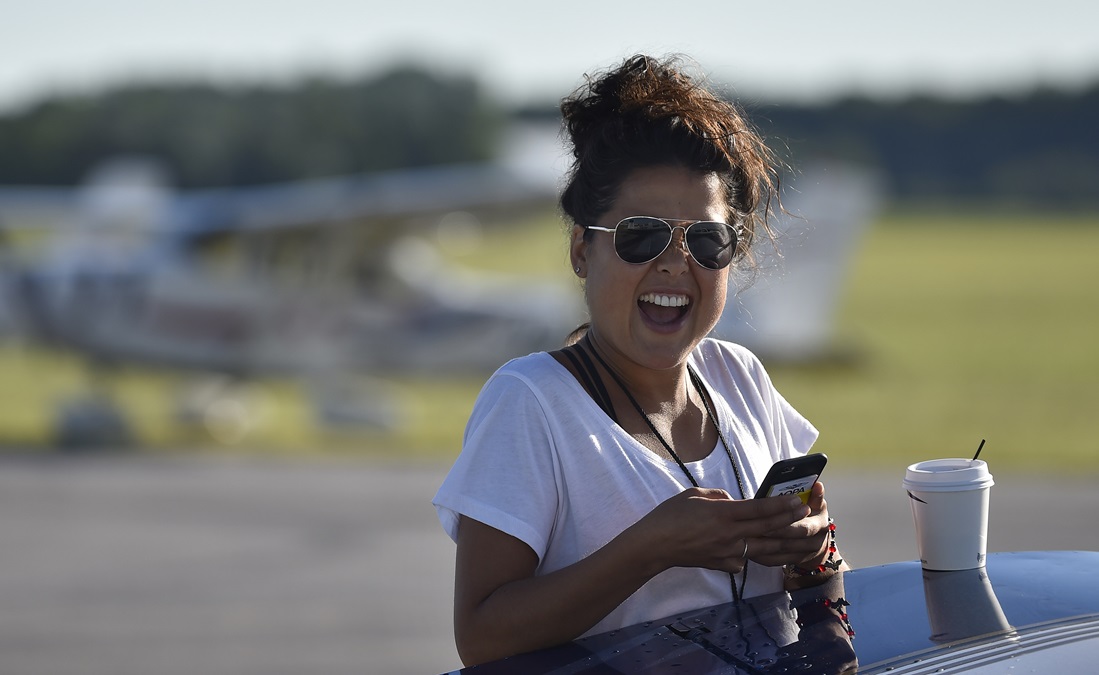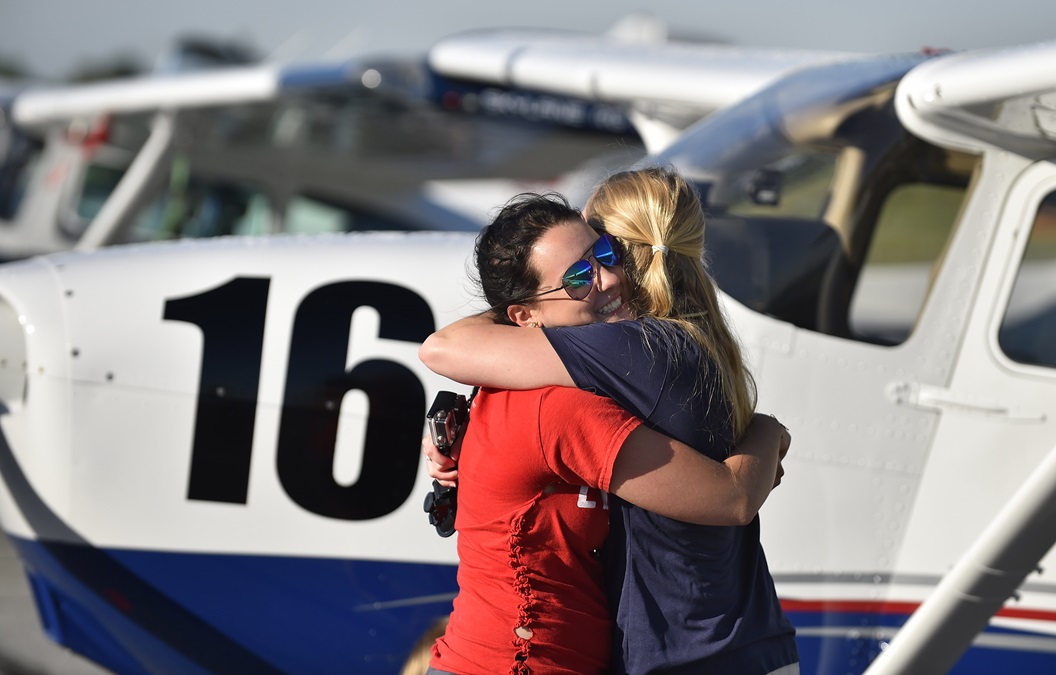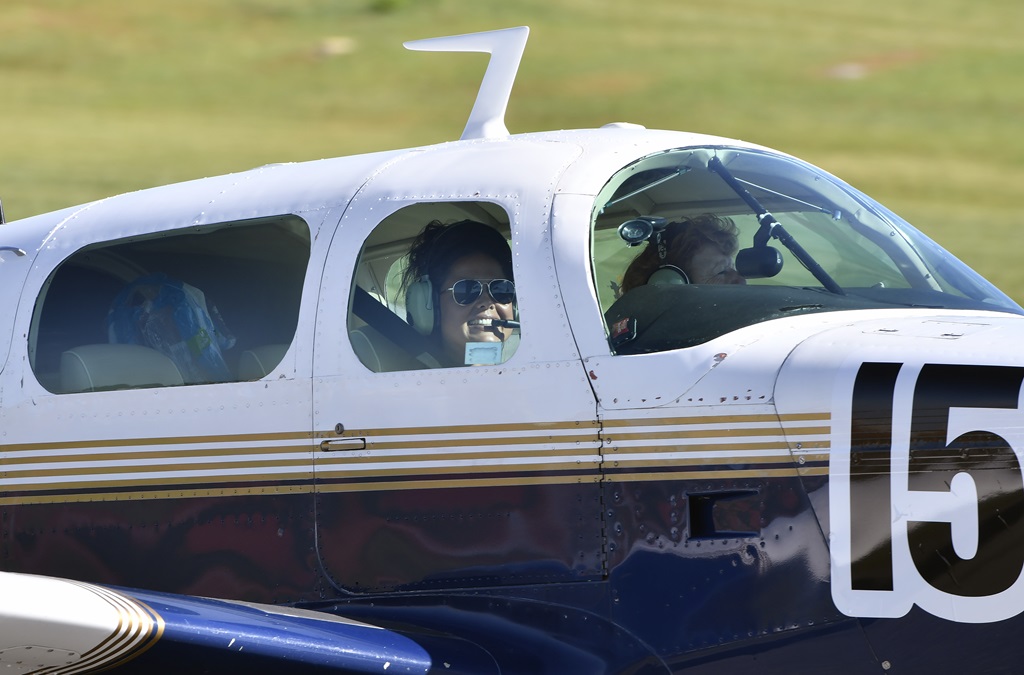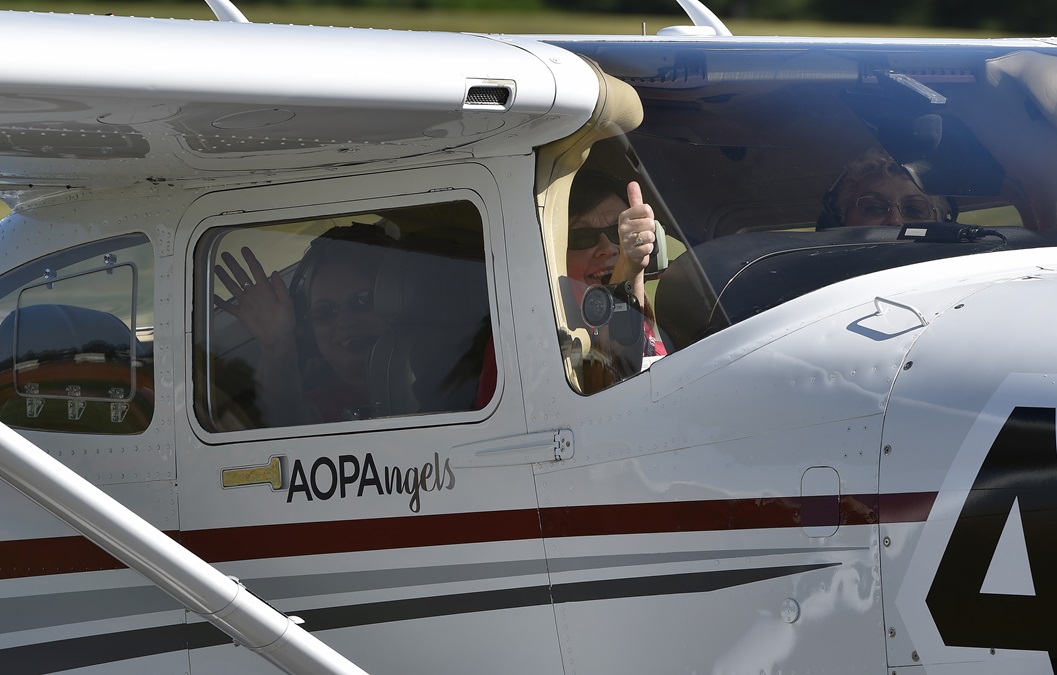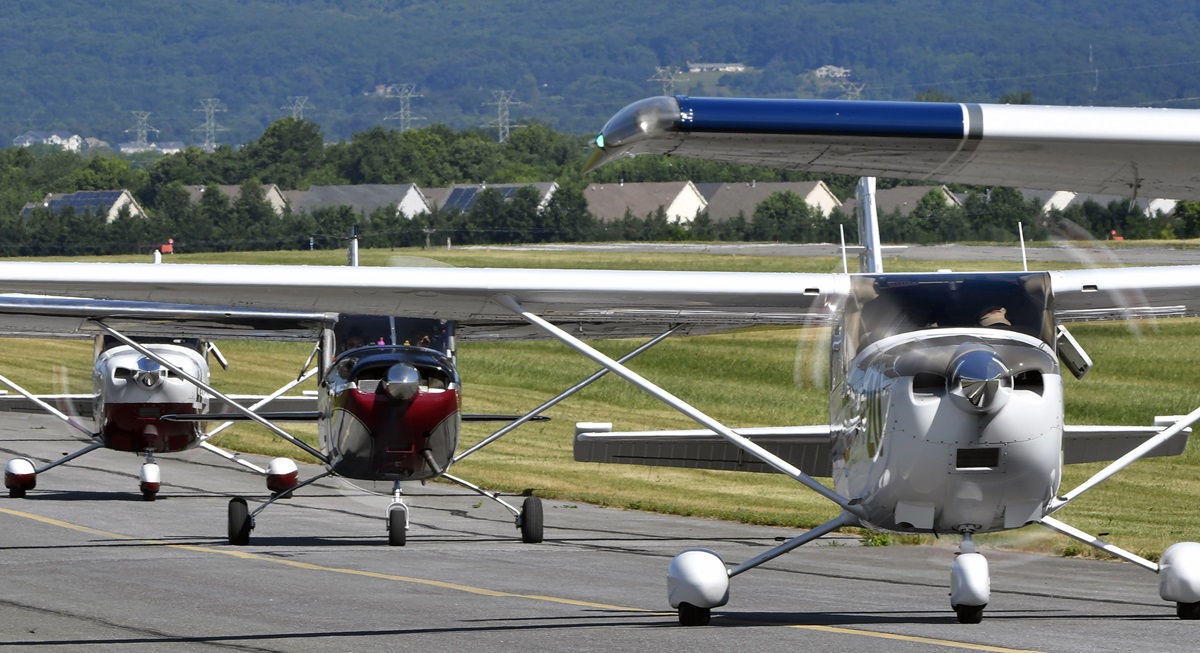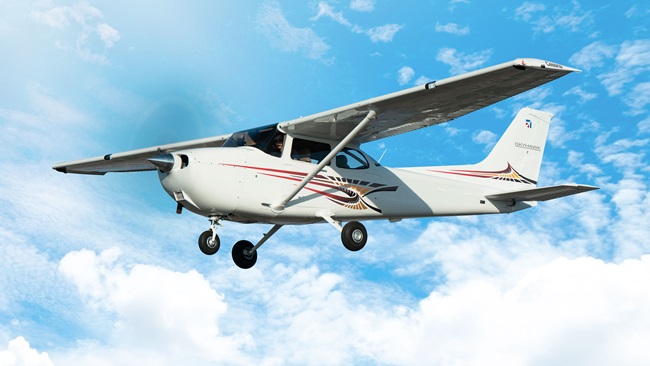Air Race Classic under way
50 teams cleared for takeoff
Air Race Classic competitors hugged and a crowd cheered as the first of more than 50 all-female racing teams started their engines June 20 to begin a 2,648-statute-mile journey from Frederick, Maryland, to Santa Fe, New Mexico. Frederick Municipal Airport air traffic controller Todd Johnson cleared a conga line of aircraft in flights of five to taxi toward Runway 23.
After an evening storm dampened the ramps and grass but not the racer’s spirits, near-perfect sky conditions greeted teams competing in the forty-first annual event.
Volunteers in orange shirts, Airport Manager Rick Johnson, Assistant Airport Manager Nick Sabo, and dozens of other aviators pitched in to wrangle aircraft from the grass onto the tarmac to prepare them for taxiing. Pilots tested fuel, cleaned windscreens, and stowed documents as the sun rose behind the control tower.
Two aircraft returned to the ramp for mechanical issues, and a third was unable to race due to an exhaust pipe problem. Texas state race director Dianna Stanger explained that racers have a three-hour window to tackle mechanical or other issues. Competitors of all ages and backgrounds fly a variety of normally aspirated, piston-powered aircraft. Teams race against their own handicap, which is determined partially on the best speed for that make and model of aircraft, along with other factors exclusive to the individual airplane. The goal is to level the field for all of the competitors so that each team has an equal chance of victory.
Celebrity pilot Ariel Tweto from television’s Flying Wild Alaska waved wildly and smiled broadly from the co-pilot seat of Mary Wunder’s 1975 Mooney M20F as team “Popping Bubbles” turned toward the runup pad. Wunder and Tweto met several years ago at EAA AirVenture and vowed to fly the race together some day.
Tweto said she has “about 150 hours” PIC time but “thousands in the right seat” accompanying her family through the Alaska wilderness. Tweto is working on several television shows that she hoped “would get younger people involved with aviation,” adding that that she wanted “more kids to fall in love with aviation,” as she did. Tweto was a popular figure on the Discovery Channel program as viewers followed her through her aviation training regimen. “I love it,” she said of flying.
Some racers appeared more confident on the radio than others as they conquered last-minute jitters. The No. 43 team “AOPAngels” made its Air Race Classic debut behind Luz Beattie’s delightfully rhythmic voice speaking to tower personnel at AOPA’s home base.
The No. 55 “Houston Hot Flashes” with aerobatic expert Debby Rihn-Harvey and Chris Dale at the yoke were calm and professional as they confirmed instructions from their V-tail Bonanza. Of course, both racers are airline pilots, so a line of aircraft stacked in front of them was nothing new. “Lewis Flyer” pilots Jane Zieba and Lauren Loomis added a bit of swagger on their read-back before No. 51’s unusually steep departure, communicating, “Classic fifty-one, we have traffic in sight ahead. Runway 2-3, cleared for takeoff and later ‘gator!”
Racers in the four-day, VFR-only cross country event ponied up their own expenses for fuel and ground arrangements, which are generally between $5,000 and $6,000.
Many, however, used the eight-stop competition to raise awareness for other causes. Tweto’s charity is called Popping Bubbles and helps Alaskans with suicide prevention and community outreach. Seven-time racer and Maryland pilot Debi Dreyfuss said the race helps her raise awareness for scholarship awards that she oversees. Dreyfuss was cheerful as she and fellow “DC3” team member Patricia Manos-Kraemer loaded gear into a Cessna 182RG that had as many sponsorship decals as a typical NASCAR racer. “We’ve raised about $20,000 over the seven years we’ve been racing,” said Dreyfuss. “The sponsors help us afford scholarship awards we give out so women can advance their aviation careers,” she explained.
By nightfall of the first day several teams had made it to the northernmost point along the route at Bemidji, Minnesota, but most competitors were spread out between Indiana and Iowa because of a nasty cold front that slung itself at the route south of Chicago. Near the end of the third day eight teams had completed the journey; four were hot on their heels in Plainview, Texas; and six more were beginning their hard-right turn west from Ardmore, Oklahoma, toward the New Mexico finish line.
“We had to wiggle around a few of those [storms], that were in the way,” said Lara Gaerte, the race’s president and a competitor in the No. 19 Cessna 182RG. “We had a great reception in Frederick, and it went pretty smoothly,” she reported after landing in Iowa. “The folks in Decorah were incredibly welcoming when we got here.”
Gaerte, flying with Jo Alcorn, said she knew about an alternator failure on the No. 7 Cirrus because the aircraft was returning to Frederick when her “No Stinkin’ Flight Plan” Cessna was in line for takeoff. Another entry had a pitot-tube malfunction.
Gaerte said four teams, including the "AOPAngels" first-time racers, were on the ground at the planned overnight stop, “and some came in after us.” She added that “everybody had a good day” and complimented the teams for their safety-conscious flight planning. Racers planned to rest up and get ready for the next leg, but not before getting together for some camaraderie. “It’s been a long day,” said Gaerte, “and I want a good meal.”





